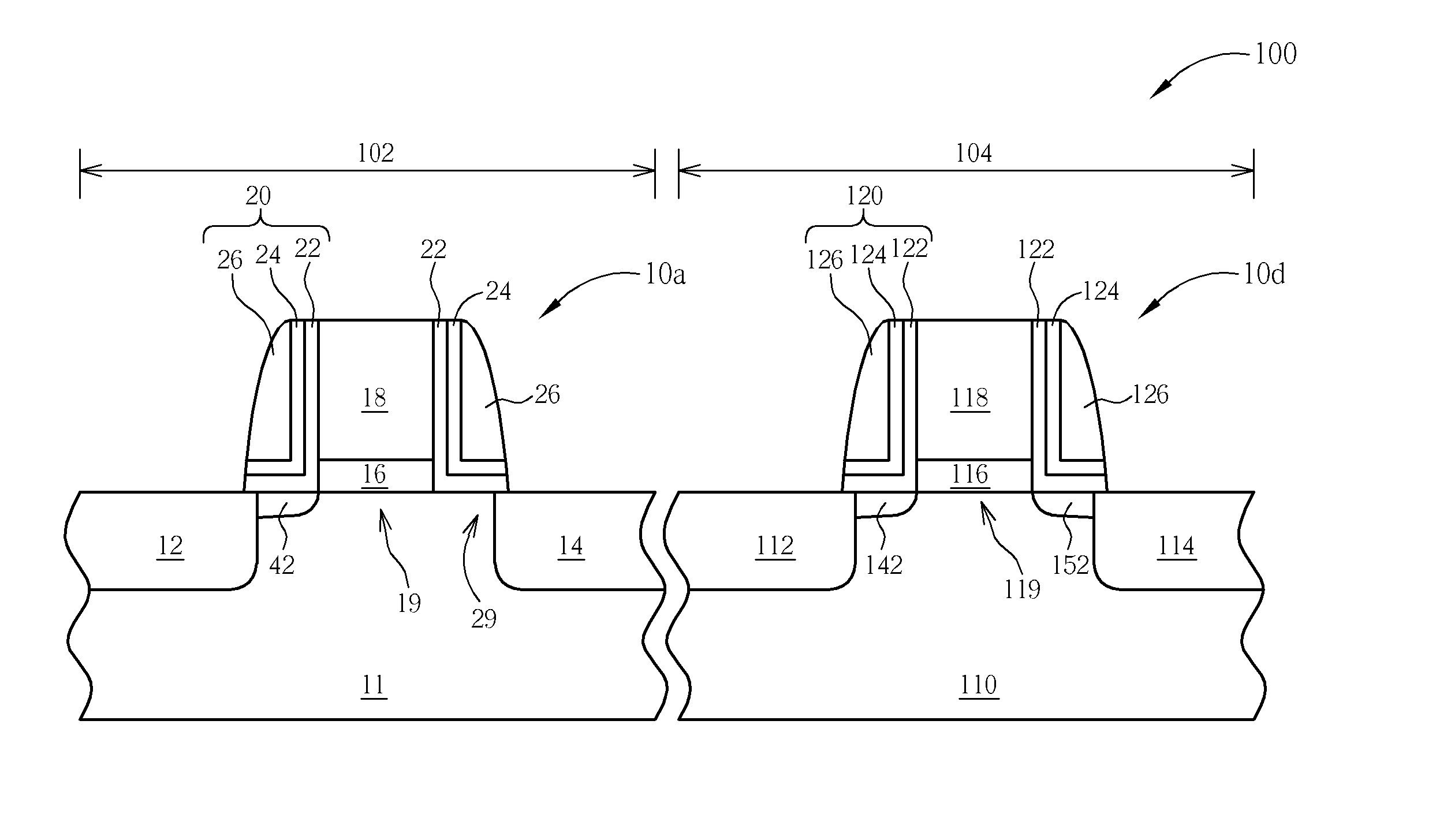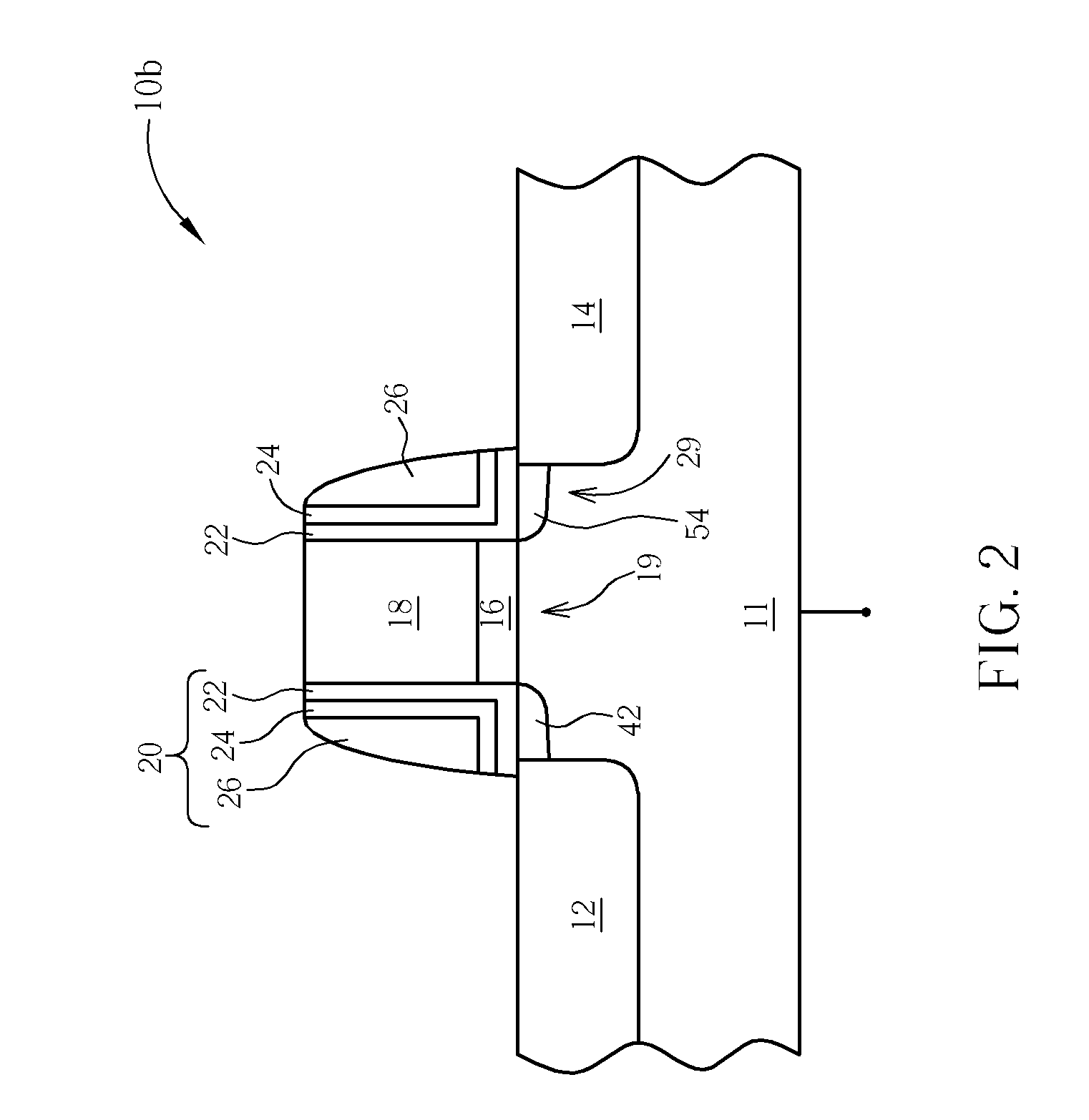Method for operating single-poly non-volatile memory device
a non-volatile memory and single-poly technology, applied in semiconductor devices, digital storage, instruments, etc., can solve the problems of increasing costs, affecting the performance of memory devices, and inevitably delayed schedules, and achieve the effect of low voltag
- Summary
- Abstract
- Description
- Claims
- Application Information
AI Technical Summary
Benefits of technology
Problems solved by technology
Method used
Image
Examples
Embodiment Construction
[0060] The present invention relates to a structure of a single-poly non-volatile memory unit and the method of operation. In particular, the structure of a single-poly non-volatile memory unit of the present invention is completely compatible with the current semiconductor logic process of 90 nm or less and with the trend of miniaturization of the elements of the next generation.
[0061] The ONO stacking layers usually serve as the spacer in the semiconductor logic process of 0.18 μm or less for the reasons that first, using SiN as the material for the spacer is better than the use of SiO2 in order to prevent the case that salicide is formed on the spacer to electrically connect the source / drain to cause element failure, and second, it is possible that the structure and the reliability of elements are sabotaged by the approach of contact holes of the source to the poly-Si to result in the contact holes going through the spacer due to the misalignment of the contact mask and the gate...
PUM
 Login to View More
Login to View More Abstract
Description
Claims
Application Information
 Login to View More
Login to View More - R&D
- Intellectual Property
- Life Sciences
- Materials
- Tech Scout
- Unparalleled Data Quality
- Higher Quality Content
- 60% Fewer Hallucinations
Browse by: Latest US Patents, China's latest patents, Technical Efficacy Thesaurus, Application Domain, Technology Topic, Popular Technical Reports.
© 2025 PatSnap. All rights reserved.Legal|Privacy policy|Modern Slavery Act Transparency Statement|Sitemap|About US| Contact US: help@patsnap.com



